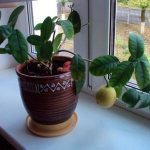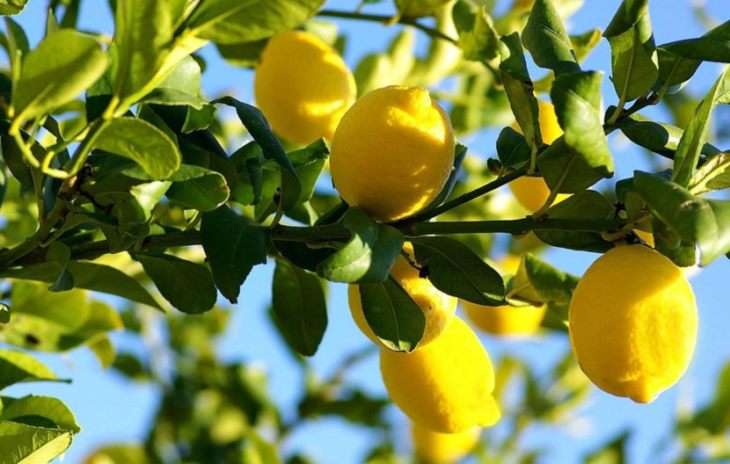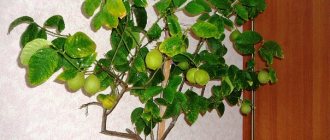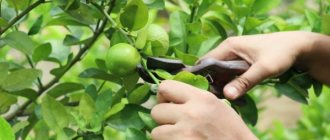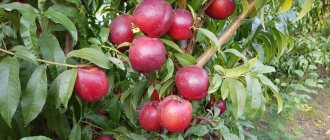What does a lemon tree need?
Light, temperature and humidity are the main conditions for growing a citrus tree. It is also possible to create favorable conditions for lemon at home.
A sharp change in the conditions of detention is unacceptable, for example, rearrangement or removal to the street - the plant may stop blooming.
Health and immunity
Viruses and bacteria are one of the causes of tree disease. Some of them are insect-borne, others spread through the air and can grow in a plant pot due to lack of oxygen. Weakened immunity is the most common disease of homemade lemon, and it is often the person himself who is to blame.
Main reasons:
- Poor quality soil.
- Unfavorable conditions such as high temperature or humidity.
- Improper watering and / or fertilization.
Correct conditions of maintenance and care
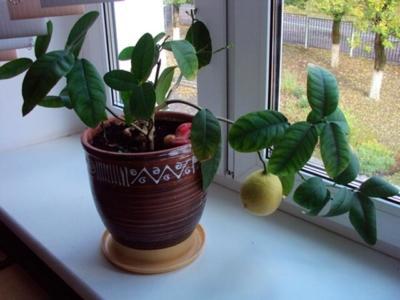
- Lemon prefers long daylight hours - for this it is necessary to correctly position the tree in the apartment (for example, east or west windows). In winter, the plant should be placed closer to the window and illuminated with phytolamp for 5-6 hours a day. In summer, the tree should not be exposed to drafts and direct sunlight.
- The plant does not tolerate heat. The optimum temperature in room conditions is from 18 to 20 ° in summer and 12-15 ° in winter. Lemon does not tolerate sudden changes in temperature, therefore, during the winter dormant period, the tree can be watered with lukewarm water.
- In the room where the citrus is located, the air must be well humidified, for this the room must be systematically ventilated, and a container with water must be placed next to the plant.
Sprinkle the lemon once or twice a week.
Improper watering
The lemon will not bloom (or discard the buds that have appeared) if it is not provided with sufficient regular watering. The plant belongs to the category of moisture-loving, therefore it does not tolerate the drying out of an earthen coma. If this happens, the tree will most likely get rid of buds or ovaries, and sometimes even part of the foliage, in order to retain the missing moisture to support the basic life processes.
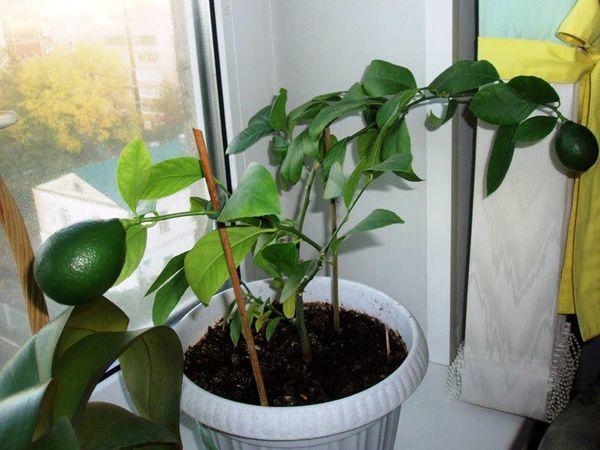

Excessive watering is equally harmful: then the soil in the pot is compacted, and the plant's root system is no longer able to extract nutrients from it. In order for the lemon to bloom, it is necessary to maintain the soil in the container with it constantly slightly moistened, avoiding drying out or stagnation of moisture. Spraying the tree will also be useful - your pet will like the high humidity of the surrounding year.
Flowering and fruiting times
Many people wonder when the indoor lemon should begin to bloom and bear fruit. It turns out that it can bloom already in the first year of life, however, it is recommended to cut the flowers in buds, since flowering greatly depletes the young plant and can destroy it. It is recommended to allow fruiting when the tree already has at least 20 leaves.
Himself the period from the beginning of flowering to fruiting takes 6-8 months(depending on the variety) while maintaining the necessary conditions. Homemade lemon blooms twice a year - in winter and autumn. After planting, the tree will be able to please with fruits only after three to four years.
With proper care, homemade lemons can flower and bear fruit for about 40 years. The main factor in the life of a plant is your concern, since the life of a tree can always be extended with the help of air layers, cuttings and grafts on other plants.
Armed with tools
For some reason, among amateur flower growers, the opinion is still widespread that vaccination is a very difficult task, if not difficult. In fact, with some training and dexterity, making a simple vaccine (and there are many ways to vaccinate) is not so difficult. There would be a desire, but some inclination to experiment, to take risks!
To begin with, we will think about what to vaccinate, and prepare the necessary tools. They are simple, accessible to anyone.
- Garden pruner. This tool is sold in many flower shops, especially in large garden centers. It is needed in order to cut cuttings for yourself, as well as cut off the branches of trees and bushes. If you are vaccinating infrequently, you may not need to buy a pruner, replacing it with an ordinary knife.
- Grafting knife. Perhaps this is the main tool in the vaccination business. It is as important for a florist as a good scalpel for a surgeon. Actually, the comparison is not accidental. The grafting knife must be as sharp as a scalpel! And, by the way, some flower growers use medical scalpels as a grafting knife. Grafting knives are always available from large garden centers.
Remember! A dull knife cannot be vaccinated! The fact is that only a razor-sharp knife can make a smooth, without microscopic burrs, a cut of wood tissue.
- Material for strapping. In order to tightly tie the scion and rootstock, besides isolating the graft site from air, a strapping is needed. Now it is sold ready-made, in the form of a special tape, but most flower growers use the usual "improvised means". As a strapping, electrical tape, plumbing "fum-tape", polyethylene cut into thin strips are usually used. There are times when a thick synthetic thread acts as a strapping.
- Garden var. It is also purchased in garden stores, used as a kind of putty, which is applied to the vaccination site.
- Disinfection solution and a clean cloth. They wipe the grafting site, cuttings, and also the grafting knife. It is convenient to use vodka or pure alcohol as a solution. You will need it quite a bit.
Why does the plant at home fail to yield?
There can be several reasons for the absence of homemade lemon fruits, for example:
- If citrus is grown from seed, the plant must be grafted and allowed to wait several years before flowering begins.
- Pests and bacteria.
- Dry air or high humidity.
- Poor soil, lack of fertilizers and minerals.
Improper care
However, the main reason why indoor lemon does not bear fruit is the improper conditions of the plant:
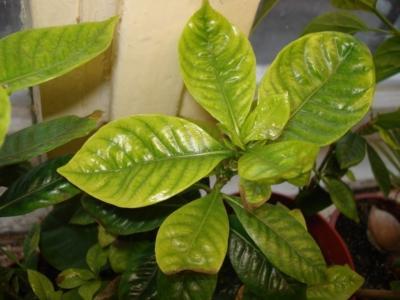

- High or low room temperature. The optimum room temperature for growing a lemon tree is 18 to 20 degrees Celsius.
- Improper watering. You need to water the lemon regularly, with previously settled water, so that all the chlorine can disappear from it. In summer and spring, 2 times a day, in winter - 2 times a week. Choose room temperature for irrigation.
- Lack of fertilizers. Homemade lemon is fertilized during the active flowering period from March to September, once or twice every two weeks, otherwise the tree will lose color. During winter dormancy and in the presence of diseases, the plant should not be fed.
- Incorrect location and lighting. Lemon is recommended to be placed closer to sunlight. An excellent option would be rooms with windows facing west or east; an insulated loggia is also suitable.
But it should be borne in mind that citruses are afraid of drafts, especially during flowering. In the hot season, the tree must be shaded. It is unacceptable that the sun's rays enter the plant, this will lead to leaf burns. - Wrong ground.
- It is better to prepare the soil yourself (earth, leaf humus and sand in equal proportions).
- Do not cover different parts of the soil in layers.
- The soil should be loose, without lumps.
- Drainage can be added to the soil to provide oxygen to the roots.
- The acidity level of the soil is not more than 7 (pH = 7), determined using an ionomer.
- The soil must be fertilized regularly.
- Once every two years, the citrus tree is transplanted with a complete replacement of the soil.
- Poor pollination. Lemon fruiting will occur without any intervention on your part. If you want to get a bountiful harvest, you need to shake the pollen from the stamens onto the pistil with the help of a cotton swab.
It is worthwhile to proceed with caution, as there is a high risk of damage to the flowers. The procedure should be repeated in the next couple of days. The tree can bear fruit with or without pollination, but in the latter case, no seeds are formed in the lemon fruit. - Too abundant flowering. A large number of flowers takes a lot of energy from the plant. It is necessary to periodically remove excess ovaries so that the citrus can bear fruit.
It is recommended to keep 10 leaves per flower.
Lemon does not tolerate sudden temperature fluctuations
I started growing a lemon tree a few years ago, when I got carried away with indoor Pavlovsky lemons. A stalk of lemon was given to me by my acquaintances.
I planted the donated stalk in a pot of sand, created a favorable microclimate for the lemon for rooting. Soon, the cutting successfully began and started to grow. Every spring, I transplanted the developing lemon into suitable larger pots.
This lemon grew up to a meter in height, with a very spreading crown - even on the windowsill it ceased to fit ... I had to transplant such a large plant into a 10-liter galvanized bucket, making holes in the bottom of several drainage holes.
I carefully looked after the lemon in the house, regularly moistened its leaves. And now, after 2 years, my lemon bloomed for the first time - I was so glad! However, all the flowers of the lemon soon fell off, never forming ovaries ...
The next year, the lemon bloomed again. Then I suddenly remembered how my mother manually pollinated the flowers of plants. And I decided to do the same with my lemon. After artificial pollination of the lemon flowers, the first fruits began to form. But here again a failure: only three ovaries did not fall off and began to develop further.
My first lemons ripened for exactly 9 months - until they turned yellow and fell off themselves. I didn't pick the fruit on purpose. I waited for how long they would ripen, and what mass they would gain. The lemons from my tree tasted the same as those purchased in the store. And they weighed about 150g each.
Inspired by such success, the next spring I put the lemon on the balcony. I thought that there would be more favorable conditions for this light-loving and heat-loving plant here than in the house. Indeed, my lemon bloomed profusely on the balcony, and a lot of ovaries on the tree then formed. But then autumn has come. And when I brought the lemon into the room, all its leaves and fruits fell off. My tree has dried up ...
At that time, I could not understand why my lemon suddenly died, completely healthy and fruiting. Then I read the reason for this in the library book. It turns out that the lemon tree does not tolerate sharp fluctuations in the temperature of the content. Therefore, when transferring a plant to the garden for the summer or placing a lemon on the balcony, when autumn approaches, you need to carefully monitor the weather. If there is a threat of a cold snap, it is necessary to bring the tree into the room in advance so as not to expose the lemon to a dangerous temperature shock.
Hope that my experience of growing lemon will help other citrus plant lovers avoid a similar mistake.
Valentina Lysenko
How to get vaccinated?
There are two ways to graft a citrus tree:
- Budding Is the safest method. A young and strong lemon bud is placed under the bark of a young seedling. This method has a high survival rate.
- Copulation - a more traumatic way for the plant. Cuttings of a fruiting lemon and a mother tree are cut at an acute angle with a special, disinfected tool and fixed to each other. It is important that there is no exposed wood after grafting.
Could the age of the crop be the reason for the lack of yield?
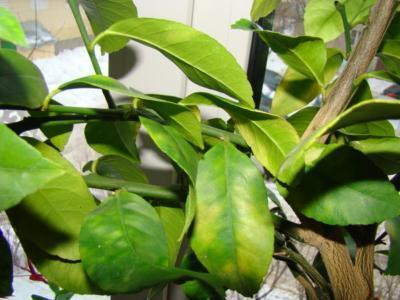

An old lemon may not give fruit for the same reason as a young one - improper conditions of detention.
The lemon tree lives and actively bears fruit up to 40-50 years, the main thing is to take care of him correctly.
A young plant, on the other hand, will not bear fruit for the first few years. A grafted lemon grown from a cutting under the right conditions will give its first fruits in 3-4 years, and one that sprouted from a stone may not bear fruit even after 10 years.
Can a lemon tree be made to bloom or not, and how?
Adequate grooming contributes to the proper development of the lemon tree. There are several ways to make a plant bloom:
- Extreme conditions can be created. For example, make a short cut or slightly damage the bark of the lemon tree by tapping it with a stick or other object. You can also hang a small weight on vertical branches so that the branches take a horizontal position. In this case, the tension in the bark will promote flowering in a stressful situation.
- Crown formation. At home, it is recommended to form a flat tree. To do this, you need to cut and gently break off the shoots to the windowsill. After the dimensions of the window opening and the crown become the same, pinching or even trimming is carried out. With this type of crown, the lemon will feel great and will be able to give a good harvest. The main thing is to have time to form the crown before the beginning of fruiting.
- Pulling branches. The branches need to be pulled together with soft wire at the beginning of sap flow - in order to concentrate nutrients in them, which will be useful during the next flowering. In November, the plant is freed from the garter.
Ringing green shoots
If you are afraid to wet the soil too much, then you can ring the green shoots of the bush. Then the lemon will intensively begin to absorb the reserve nutrients accumulated in the leaf plates, which will stimulate the blooming of flower buds and the formation of fruits. Choose a young green shoot for ringing. Use a razor blade or utility knife to remove the small ring of bark between the two flower buds. The bark ribbon should be up to 0.5 cm wide.
It is important not to damage the flower buds when ringing. You need to remove the lemon bark carefully, trying not to break it. Then the bark is turned inside out and tied back to the stem of the shoot. The bark must be fixed with tape or tape so that it covers the entire cut.
Reasons for the loss of ovaries
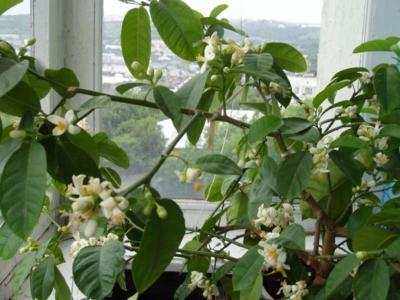

There are several reasons why the plant blooms violently, but does not bear fruit.:
- Inappropriate temperature and lighting.
- Tree age - the lemon may be too young to bear fruit.
- Too poor soil, lack of complementary food and fertilizers.
- Inconsistency in the number of flowers and leaves (one flower for two dozen leaves; the rest are cut off in buds).
- Dry soil or, conversely, overflow.
- Improper pollination (gently transfer pollen from bud to bud with a cotton swab).
In this way, it is quite difficult to make lemon blossom and bear fruit at home, but interesting.If you follow all the above recommendations and take seriously the cultivation of a plant, it will surely thank you with exuberant flowering and many fruits.
If you find an error, please select a piece of text and press Ctrl + Enter.

